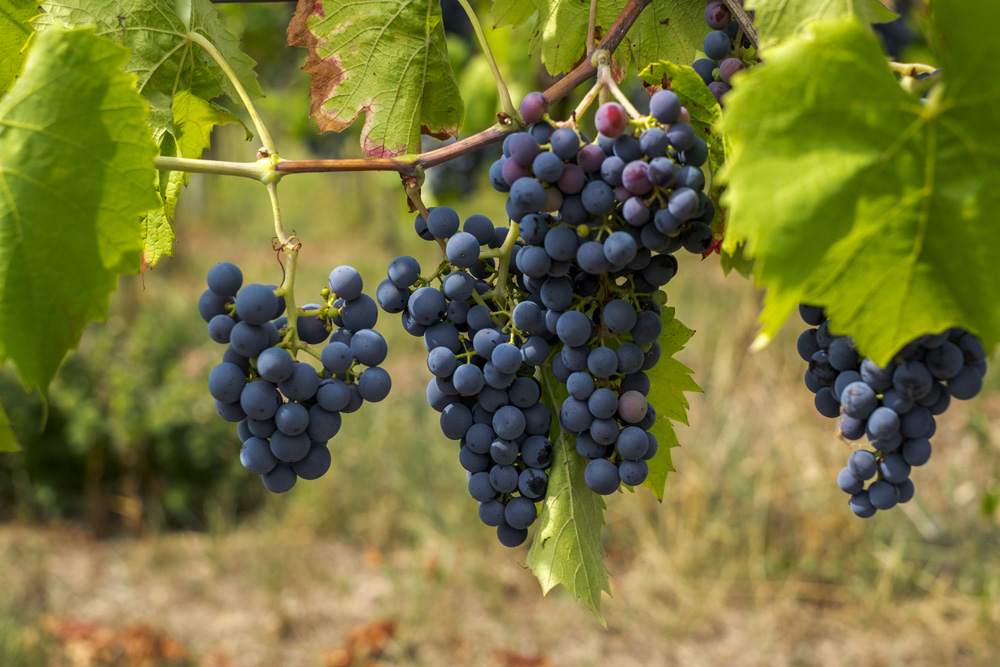Vitis sp.
Common Name:
Grape

General information:
They grow very quickly, even in bonsai pots so styling is a bit of problem, but they are quite striking with clusters of edible berries on them. Trunks can be most interesting and very gnarly.
Most grape vines have big leaves and their leaves do not dwarf well. To have a reasonable proportion for a bonsai there needs to be a relatively large and old massive trunk.
Lighting:
Full sun.
Temperature:
Early frost is the big grape-killer. Grapes can handle very cold temperatures but they need to go dormant first. They have to be cooled down gently, never going below freezing, and allowed to yellow all their leaves. Leaf petioles should become swollen at the base and fall off easily. After another week or two more they should be able to handle subzero temperatures.
Watering:
Plenty of water
Feeding:
Grape bonsai should be heavily fertilized, especially in the fall. Then in spring there should be clusters of flowers coming out with the leaves. Fertilize grapes in bonsai pots alternately with one tablespoon of Miracle-grow in a gallon of water and one tablespoon of Miracid in a gallon of water per week. Continue to fertilize with Miracle-Gro once a week when the plant has flowers and fruit.
Pruning and wiring:
Both wiring and pruning should be done in midwinter. Prune back all existing canes to 2 or 3 buds and make the final cuts in early spring just before budding starts to guard against any die back. Try not to prune it during spring. Use pinching to control growth during the growing season.
Branches/leaves want to grow like vines - elongated stems. One way to control overall branch and inter nodal length is by pinching to remove most new leaves.
Defoliation usually results in more and smaller leaves. However, the old petioles often do not fall off the plant as (or after) the new leaves appear and mature.
Blooms appear between the 3rd and 6th leaf. The main attraction of a grape bonsai may be the grapes. Grapes are produced on the new shoots, so the vine needs to be pruned back when it is dormant. To get grapes, fertilize very heavily and protect the flowers from rain. If grapes form, the style will automatically be that of a weeping tree, unless it is staked upright.
To get grapes prune during a plant’s dormant time to have two to three inter nodes on a branch. Leave about a thumb-length stick after the last node. Following spring it should back-bud on these nodes and make lots of grapes. If too few inter nodes are left the result is “growing” branch that will not flower and bear grapes. If too many inter nodes are left, it will not have enough growing power to develop nice healthy looking grapes.
Some species suitable for bonsai:
The following botanical names were obtained from the Time-Life Plant Encyclopedia accessible on the Internet from the Virtual Garden at: http://www.virtual garden.com/
Vitis (Vitis labrusca) American bunch grape, also called fox grape (Vitis labrusca); European grape (V. vinifera); Muscatine grape (V. rotundifolia ) The grape is one of the oldest fruits known to man, and one variety or another can be grown in almost every part of the country.
Vitis (Vitis coignetiae) V. coignetiae (glory vine); V. labrusca (fox grape); V. riparia (riverbank grape); V. rotundifolia (Muscatine grape); V. vinifera (European grape); V. ‘Concord’; V. ‘Delaware’; V. ‘Fredonia’ The combination of lush foliage, edible fruit and brilliant autumn color.
Compiled by Sabrina Caine
